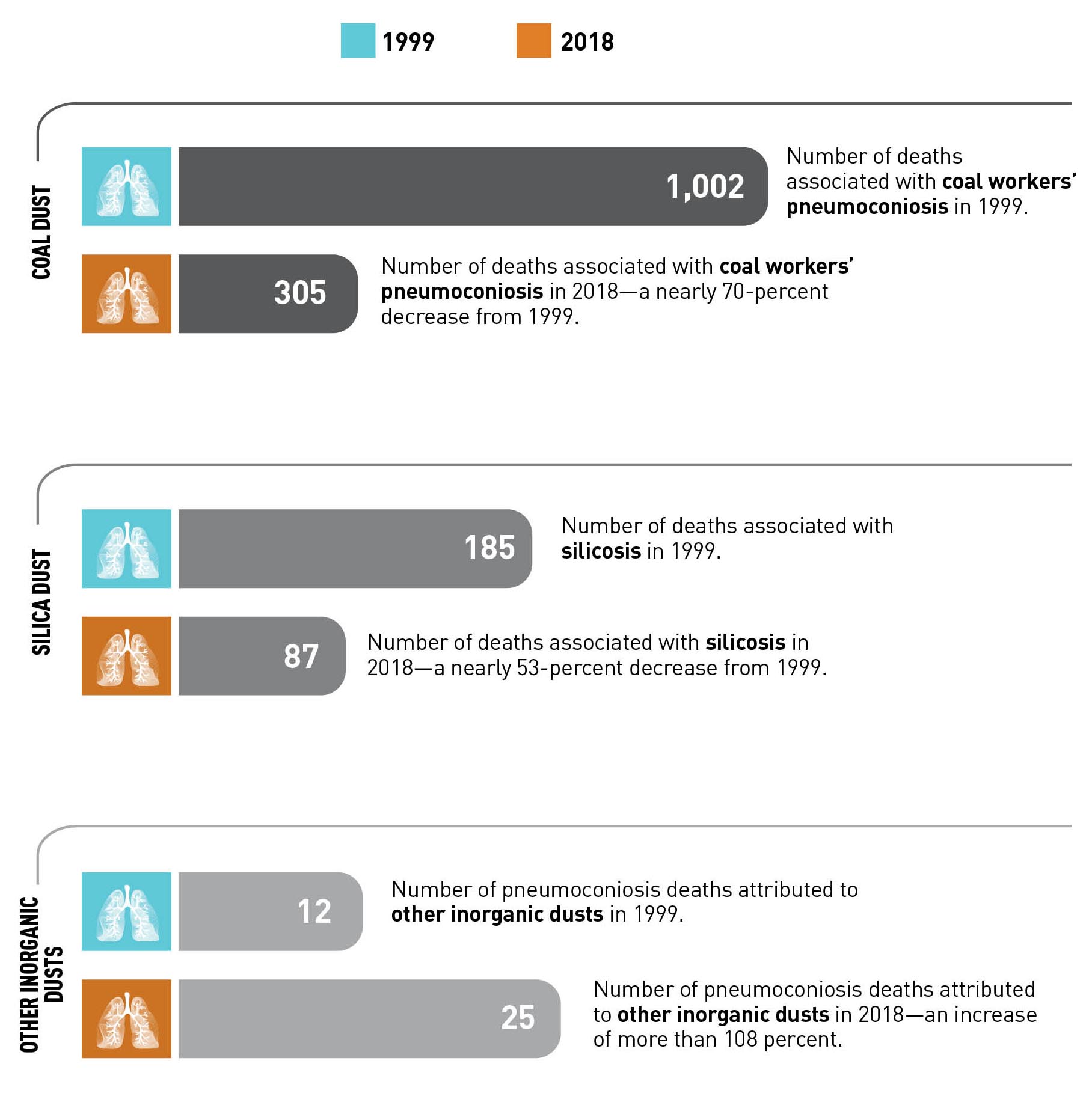DEPARTMENTS
BY THE NUMBERS
Pneumoconiosis Deaths in the United States
A CDC report published in June indicates that deaths attributable to pneumoconiosis declined during 1999–2018 but calls for increased focus on pneumoconiosis attributable to "other inorganic dusts" such as aluminum, bauxite, beryllium, iron, and tin oxide. Deaths from pneumoconiosis attributed to “other inorganic dusts” increased significantly during the period studied, CDC has found. Pneumoconioses attributable to other inorganic dusts include berylliosis and pulmonary siderosis, a disease most common in workers exposed to metal fumes during welding. Information from the report is presented below.
From “Trends in Pneumoconiosis Deaths — United States, 1999–2018”:
“Despite the decline in mortality and updated regulatory actions addressing occupational exposures to hazardous dusts, pneumoconiosis-associated deaths continue to occur, underscoring the need for maintaining exposure prevention measures and continued surveillance. Recent reports indicate the re-emergence of progressive massive fibrosis… [and] new tasks and occupations (e.g., quartz countertop installation and hydraulic fracturing) that put workers at an increased risk for silicosis.”
SOURCE
CDC: Morbidity and Mortality Weekly Report, “Trends in Pneumoconiosis Deaths — United States, 1999–2018” (June 2020).

Tap on the graphic to open a larger version in your browser.
In August, The Knoxville News Sentinel reported that a student intern and a researcher at Oak Ridge Associated Universities had devised an experiment to replicate the McCluskey incident in order to study the effects of radiation on the body. By irradiating vials of their own blood for different lengths of time, the researchers hope to generate data that clinicians and first responders can refer to following an exposure incident.
Read more from the News Sentinel.

